Features of lime: production and use
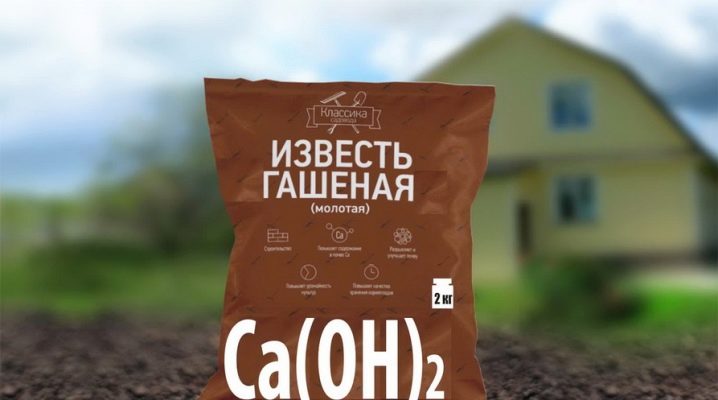
The history of the use of lime has more than a dozen centuries. This material has firmly taken its place in the most diverse spheres of human life. The product has a lot of useful characteristics, while the raw materials themselves are affordable, and the manufacturing technology is quite simple. Today, over 1 million tons of lime are produced in our country annually. It is the main component of building mixtures, used in gardening, medicine and in everyday life.
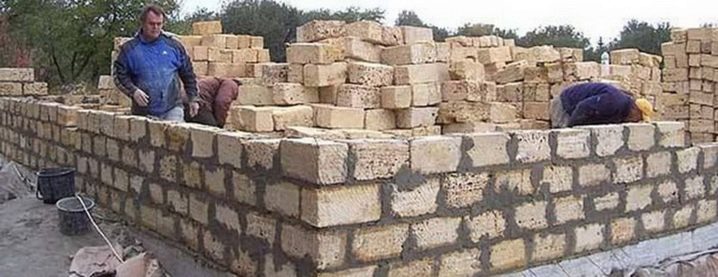
Features and manufacturing
Lime is a special material. It is made as a result of roasting and processing of chalk, shell rock, as well as limestone and other carbonate-containing natural rocks. Fossils are processed in ovens at temperatures ranging from +1000 to +1300 degrees. Lumps of rocks are transformed into lumps of various sizes and shapes, which are further processed without the participation of chemicals and catalysts. The result is a completely natural material, consisting of 100% natural ingredients. In lime, a slight presence of clay impurities and mineral additives is allowed.
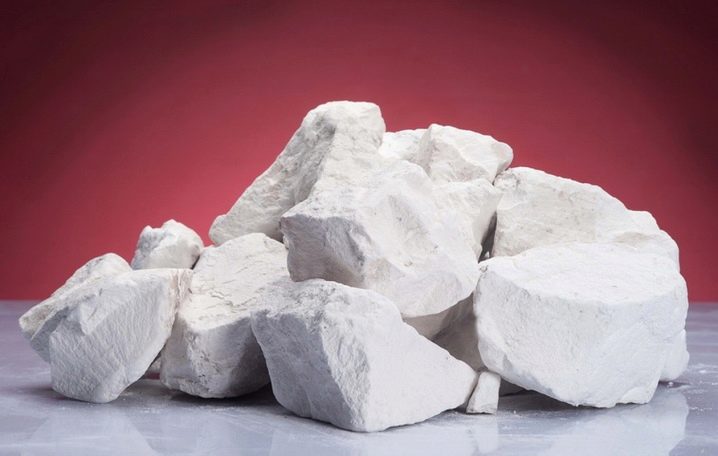
Composition and properties
In its pure form, construction lime is a colorless and odorless material that is very poorly soluble in water.
There are several types of lime.
- Extinguished. Chemical formula Ca (OH) 2. It is subdivided into powdery fluff and lime dough.
- Quicklime. This composition with the CaO formula can be conditionally divided into ground and lump, depending on the processing method.
- Chlorine. The formula looks like Ca (Cl) OCl. It is considered an excellent antiseptic.
- Sodium. This species is represented by a mixture of slaked lime and NaOH (caustic sodium soda). It is used in a narrowly targeted manner where the neutralization of carbonic acid is required.
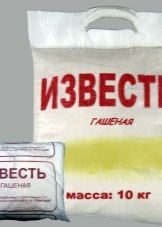
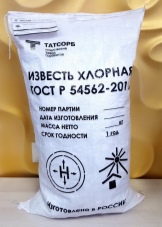
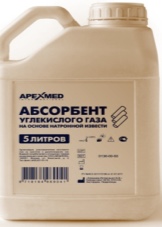
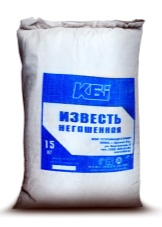
Products, in which the basic component is lime, are distinguished by increased strength, water resistance and density.
The advantages of the material include:
- hygroscopicity - lime is resistant to moisture, does not allow liquid to pass through and does not change its properties under the influence of adverse external conditions;
- disinfection - it is an antiseptic, all bacteria that get on the surface of the lime die, the composition is an unfavorable environment for the appearance of mold and fungi;
- lack of unpleasant odor;
- versatility - its technical characteristics are high, it can be used on old surfaces, as well as on freshly painted surfaces;
- resistance to UV rays;
- good interaction with the coloring composition;
- low price.
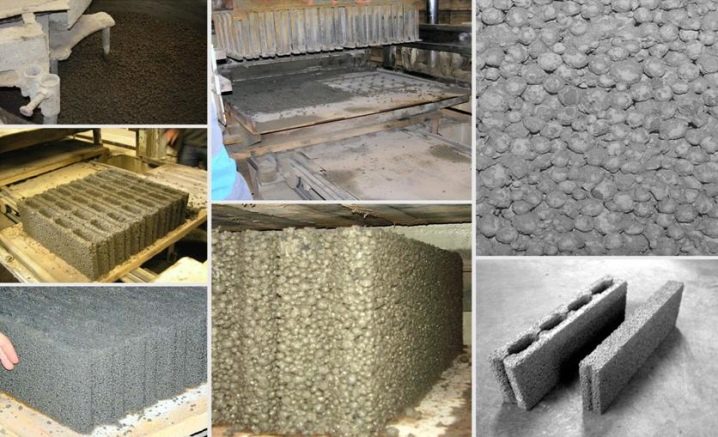
Lime has some disadvantages.
- The likelihood of streaks, streaks and bubbles. This happens in cases where all the rules for diluting the composition are not followed: a too liquid solution will not give the desired shade, and too thick - it will begin to crumble and turn into bubbles as it dries.
- The material is highly corrosive. It requires compliance with safety regulations when working with the material, its storage and transportation.

Varieties
The technology for processing natural raw materials determines the division of construction lime into two types:
- quicklime containing CaO;
- slaked (hydrated), the main component of which is Ca (OH) 2.
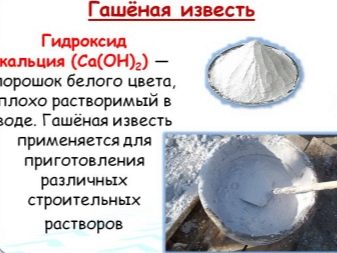

The content of impurities affects the degree of plasticity of the product, which leads to the separation of the composition into lean and oily lime.
Distinctive features of fatty lime are:
- high rate of blanking;
- generation of heat;
- plasticity of the composition.
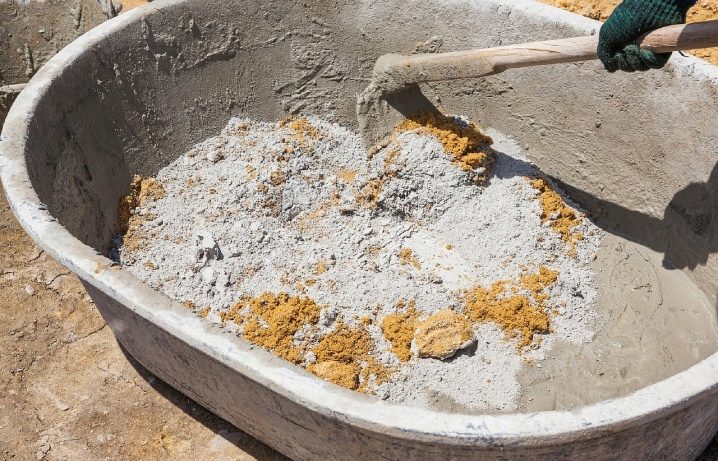
This material is added to mortars to increase the elasticity of the mixture and ease of use. A lean composition has a high extinguishing rate, and much less heat is generated. As a result of processing, the composition is granular and heterogeneous, and the dough itself has low plasticity.
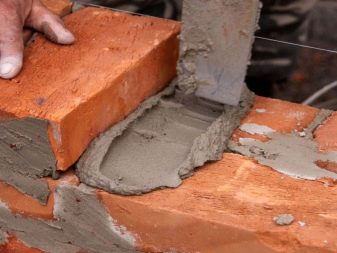

Lime, which tends to harden in air, is called air lime. A mixture that can solidify both in air and in water is called hydraulic. In air lime, silicates and calcium aluminoferrite account for up to 12% of the composition, in rare cases this figure reaches 20%. This mixture is widely used for painting porous surfaces of concrete, brick, plaster and natural stone. The percentage of impurities in hydrate compositions is more than 25% and reaches 90%. They are common on surfaces that are constantly exposed to moisture.
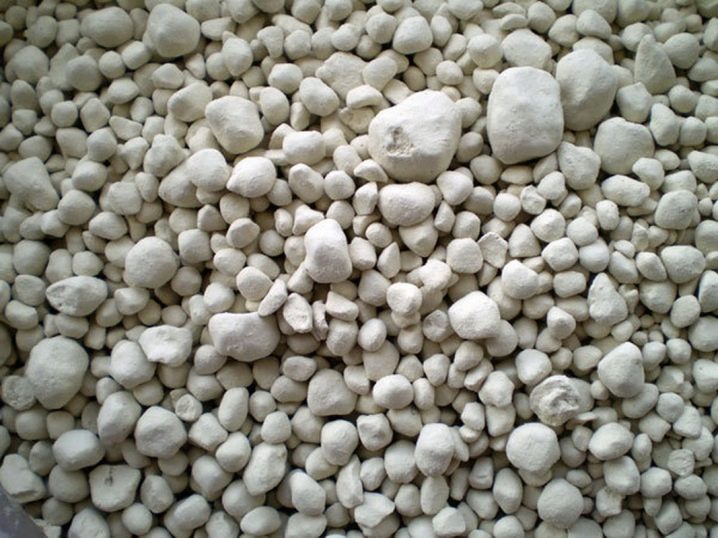
According to the parameters of the oxide in the composition of lime, one can conditionally distinguish:
- calcium - contains up to 2% MgO;
- low magnesium - contains 2–5% MgO;
- magnesia with a magnesium oxide content of 5–20%;
- dolomite, including 20-40% of this component.
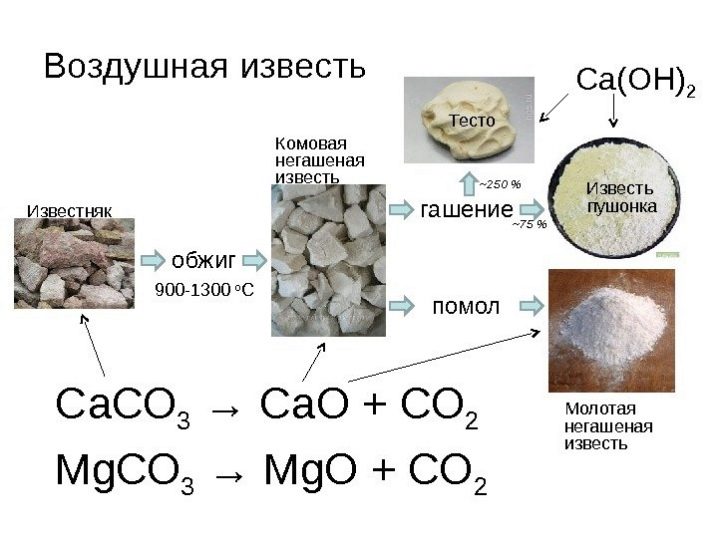
Depending on the type of processing of natural raw materials, the following options for air lime are conditionally distinguished:
- quicklime lump or boiling pot, which in its mass consists of Ca (OH);
- quicklime ground is a material obtained as a result of crushing lump lime, it has a powdery structure;
- slaked lime is formed when slaking lump lime;
- calcareous body is another material produced as a result of extinguishing a lump composition with a pasty structure;
- Lime milk is a light-colored lime, calcium hydroxide is present in it both in a dissolved state and in the form of particles.
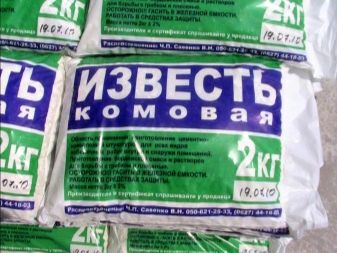
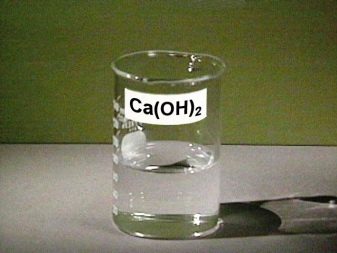
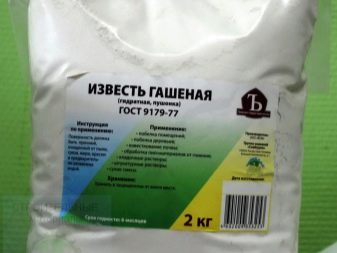
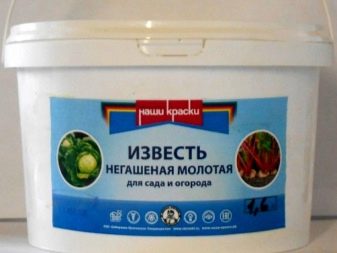
According to the quenching rate, the material is divided into three types:
- fast-extinguishing (extinguishing speed no more than 8 minutes);
- medium quenching (reaction time is from 8 to 25 minutes);
- slow-quenching (requires 25 minutes or more)
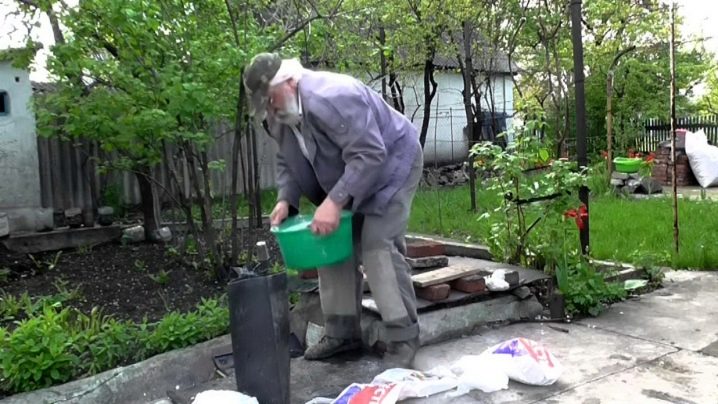
By the type of use, bleaching, technological and other types of lime are distinguished. In addition, any lime is conventionally divided into a composition with and without impurities.
Extinguished and uncanceled: the difference
Slaked and quicklime varieties of lime are substances that differ in their chemical composition. Quicklime is calcium oxide, and slaked is its hydroxide, it is obtained as a result of quenching with water. By the way, during storage, quicklime gradually absorbs moisture from the air and slowly transforms into slaked lime.
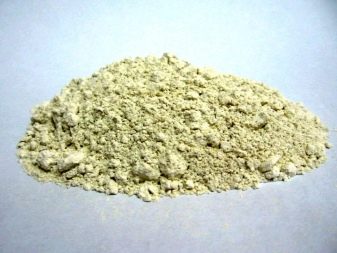

The scope of their application also differs. Quicklime is a component of dry building mixtures, and is also used for the production of silicate bricks. Slaked lime is used for painting and plastering as a binder.
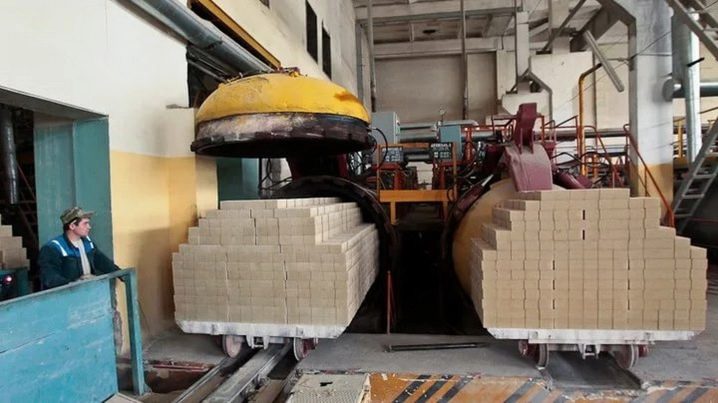
Quicklime has several benefits:
- does not generate waste during work;
- low degree of liquid absorption;
- the ability to operate at subzero temperatures;
- high strength;
- wide range of uses.
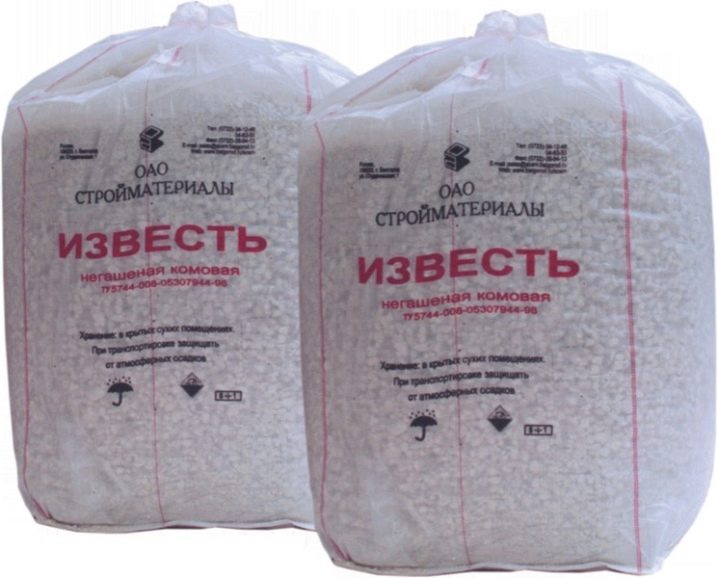
Along with the advantages, the quicklime mixture also has a significant drawback - it is dangerous to health, is a caustic composition, and leads to burns of the skin and mucous membranes. Working with it requires caution, the room must be ventilated, and it is advisable to use protective goggles, a respirator and gloves.
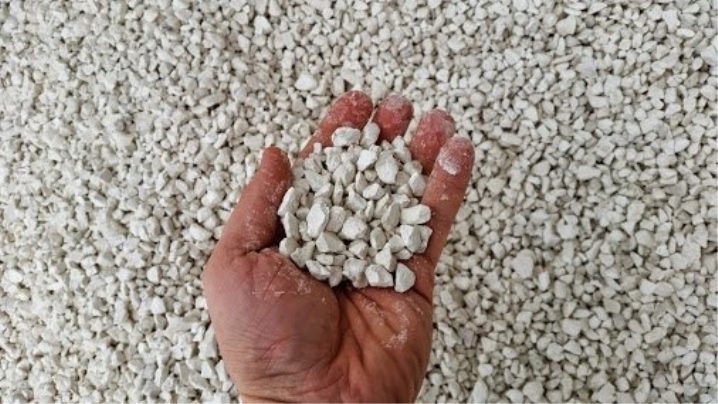
How to determine which lime is in front of you - slaked or not.
- This information must be indicated on the packaging.
- Mixtures can be distinguished by touch. When you touch the quicklime, you feel warmth, but the quicklime is at a normal temperature.
- Quicklime is most often pebbles and lumps, and the slaked mixture is sold in a powdery state.
- You can check the composition with water. When liquid hits the quicklime, a reaction immediately begins, heat and gas are intensely released, and splashes fly in all directions.
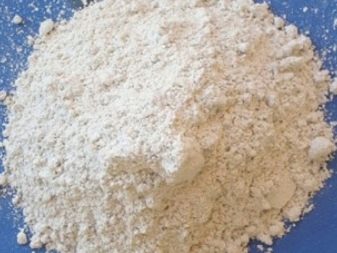

Application
Lime compositions have a fairly wide scope of use.
- For disinfection of premises. After processing, fungi and mold are not formed on the walls and on the ceiling.
- As a heater in private housing construction. When combining fluff with gypsum and sawdust, an inexpensive, environmentally friendly insulation is obtained, they are filled with voids. As it hardens, a film forms on the surface, which creates a heat-shielding effect, but at the same time does not interfere with air ventilation.
- When laying bricks. In combination with gypsum, lime compositions contribute to increased adhesion of surfaces, ahead of cement mortars in this parameter.
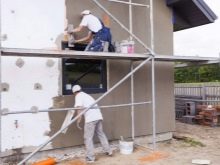
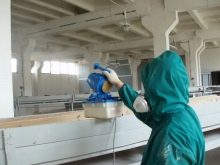
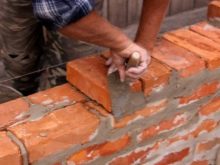
Slaked and quicklime have their own peculiarities of use. Quicklime is used in construction. For a long time, cement was produced from it, which hardens quite well and provides the adhesion of the coating. However, lime absorbs moisture, which is why mold starts to form in the walls. This feature led to the phasing out of the use of quicklime in construction.
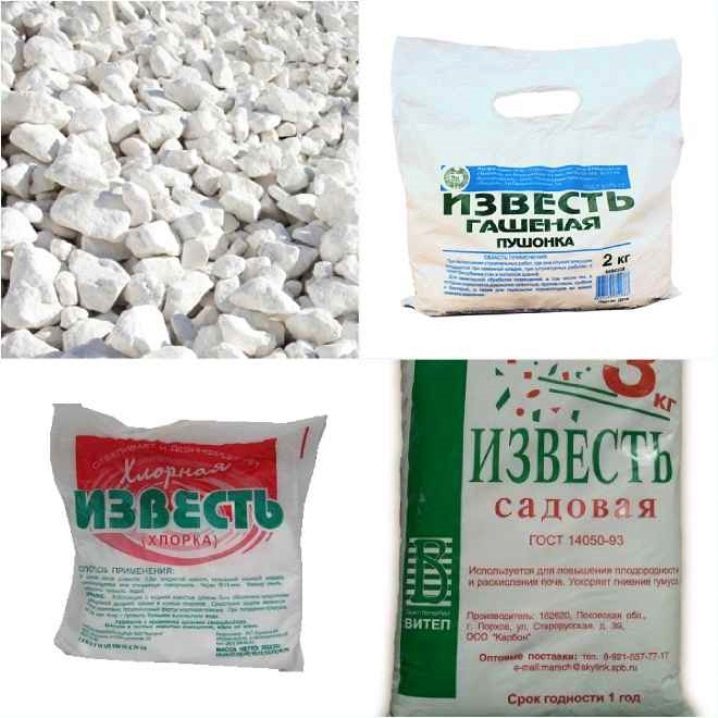
Today this composition is an active component of plaster, cinder concretes and paints. Quicklime is used in the cold season, because when it is quenched, strong heat is generated, which creates the desired temperature when solidified.
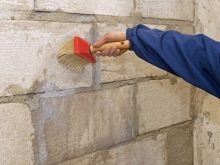
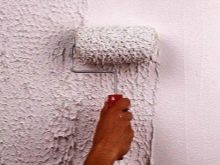
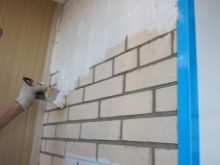
Advice: you can not use quicklime for finishing stoves, fireplaces and heated surfaces, because under the influence of high temperatures, lime releases CO2 - carbon dioxide, dangerous to human life and health.
Slaked lime has a wider range of applications.
This material is used almost everywhere:
- suitable for whitewashing at home;
- softens water, therefore it is used in light industry for tanning leather;
- it is used to create a calcium compound during the causticization of Na, K carbonates and the synthesis of various acids;
- in dentistry for disinfection of the oral cavity and dental canals;
- poured into sand-cement compositions during construction;
- serves as a raw material for the production of feed for livestock and poultry;
- is a food additive E526, used as an emulsifier that helps to mix immiscible products, such as water and oil;
- for neutralization of sewage and other solutions.


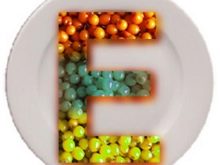
Separately, it is worth mentioning the use of limestone in agriculture, since no gardener can do without it. Lime fertilizers include lake lime, marl, dolomite flour and tuff, which are produced by processing quicklime with fluff. These fertilizers are intended for painting trees (for this you need to dilute 1 kg of the composition in 4 liters of water) and spraying plants (lime water is mixed with copper sulfate).
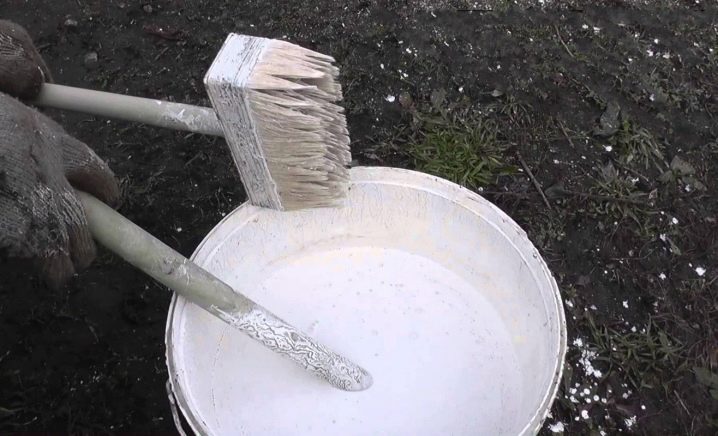
How to extinguish?
Slaking of lime takes place in accordance with the chemical formula: CaO + H2O = Ca (OH) 2 + 65.1 kilojoules. For this, limestone powder is dissolved in water, which reacts with calcium oxide. In the course of the reaction, an active release of heat is noted, as a result, the water turns into a gaseous state. The released vapors loosen the rock, the lumps are converted into a fine powder.

If, during slaking, water is added to lime in the amount of 70–100% of its total weight, then a hydrated composition (fluff) is obtained. It is produced under factory conditions thanks to specially equipped hydrators. If limestone and water are taken in a 3: 1 ratio, then a lime dough is obtained, which is used on construction sites. Keeping the mixture in a special pit for 2 weeks, it acquires special plasticity.
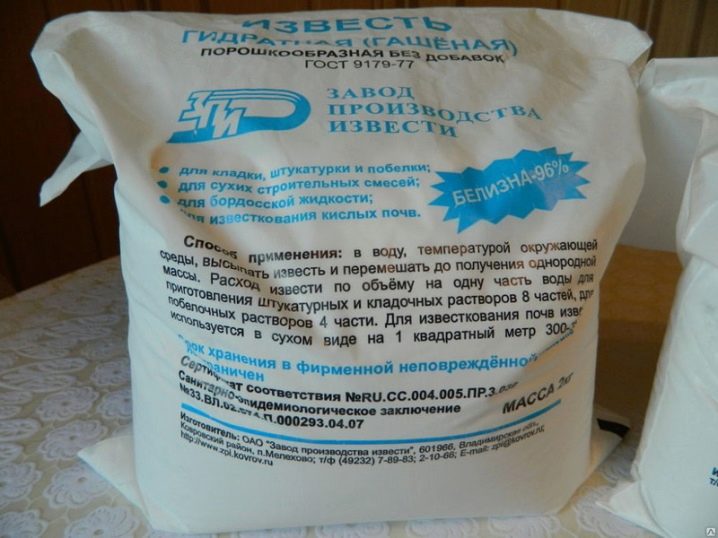
During the slaking process, not a single metal oxide should remain in the limestone, otherwise the quality of the mixture will be rather low. For effective extinguishing, it takes at least a day. Ideally, this process takes 36 hours.

The main stages of extinguishing:
- limestone is poured into the container - it is allowed to use metal containers, but it should not contain rust;
- the powder is poured with water (at the rate of 1 kg of composition per 0.5 l for the manufacture of lime dough, and 1 l of water for creating fluff); if lime is a slow-extinguishing one, then it is advisable to pour water in several passes;
- the mass is thoroughly mixed, it is advisable to repeat this procedure several times in order to prevent a decrease in the release of steam.
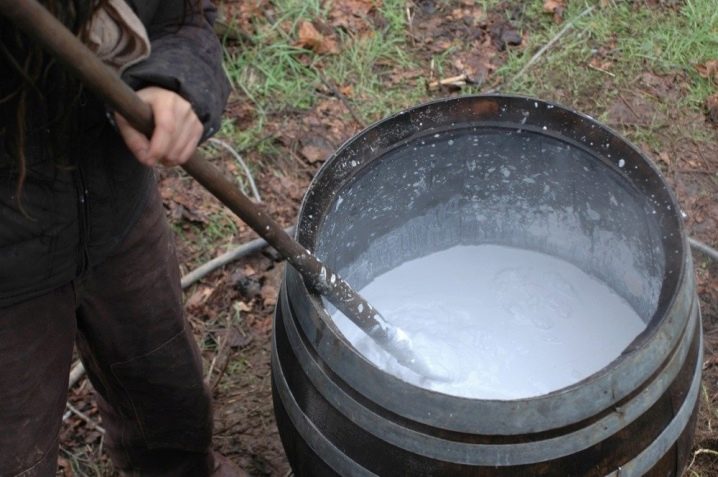
Work should be done with the utmost care. When quenched, the solution heats up to +150 degrees, the boiling composition actively boils and splashes. The first 30 minutes of extinguishing the mass should be stirred with a special wooden stick, so use protective clothing to avoid accidents. After the end of quenching, the container is closed with a lid and left for at least 2 days. It is optimal to let it "brew" for 2-3 weeks, it is during this time that the composition acquires the most effective disinfecting characteristics.
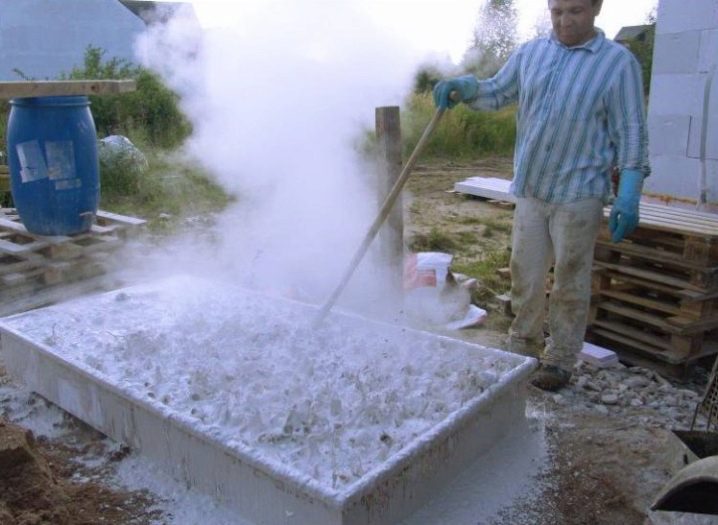
Work tips
Lime is diluted with water in proportions that differ depending on the purpose of the composition. If the mixture is prepared for whitewashing walls and ceilings, then raw materials and water should be mixed in proportions of 1: 2 (2 liters of water are taken for 1 kg of limestone). The solution is left for two days, after which it is filtered. To process tree trunks for 1 kg of powder, 4 liters of water are taken, the mixture also requires infusion for 24 hours. For spraying plants, limestone is diluted in a large amount of water with copper sulfate, the resulting solution can be used in an hour.
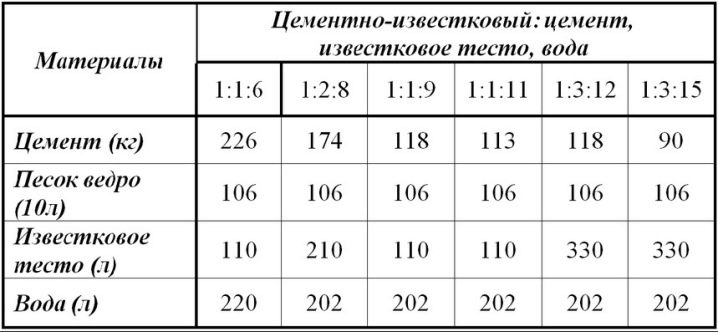
Remember: during the preparation of slaked lime, do not bend over the container, otherwise corrosive vapors will cause burns to the skin, eyes and respiratory system.
Professionals recommend following these tips for working with lime.
- so that the coating is more durable and the plaster layer does not swell, wallpaper glue or latex-based paint (up to 10-15% of the total weight of the mixture) is added to the milk of lime;
- when making a mixture for whitewashing, a tablespoon of liquid green soap can be added to the milk solution - this ensures a tighter adhesion of the composition to the bark of trees;
- it is worth adding natural drying oil to the decorative whitewash (1/3 tsp per 1 liter of composition or 5 g of salt), which will make the coating resistant to external adverse influences;
- if you add a little blue to the whitewash, then it will give a light bluish tint - this property is often used in the preparation of solutions for covering the ceiling;
- color limescale compounds are best used in cold or damp rooms.
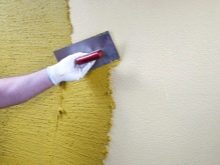


Storage and safety
When working with lime, compliance with safety rules is required:
- mixing of the compositions is carried out only in a metal container;
- it is required to use personal protective equipment for the face, eyes, hands and respiratory organs;
- extinguishing begins directly 10–20 minutes after adding water to lime; during the reaction, intense steam is released, so it is not recommended to bend over the container and check the consistency of the mixture with your hands;
- when the material interacts with water, a specific smell is emitted; all work is best done in a ventilated room or in the fresh air.
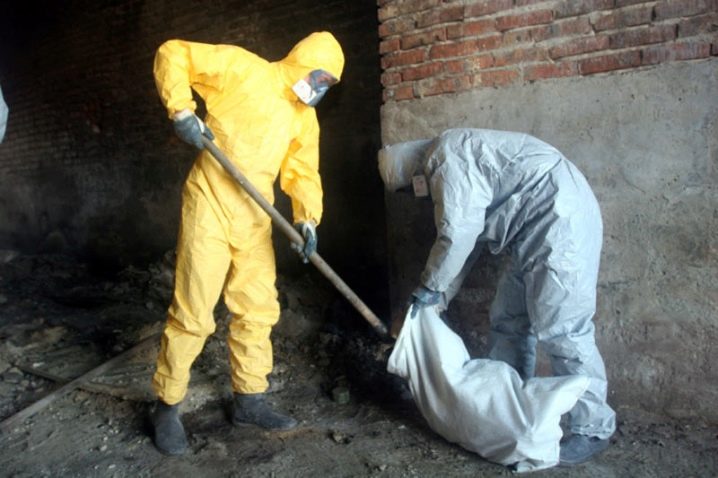
There are peculiarities of storing lime compositions. Lump lime must be waterproofed, since this substance can extinguish even moisture in the air. If the mixture is stored in a paper bag, then its shelf life is short, as it loses its performance properties one month after unpacking.The room where lime is stored must have wooden floors raised at least 30 cm from the ground.
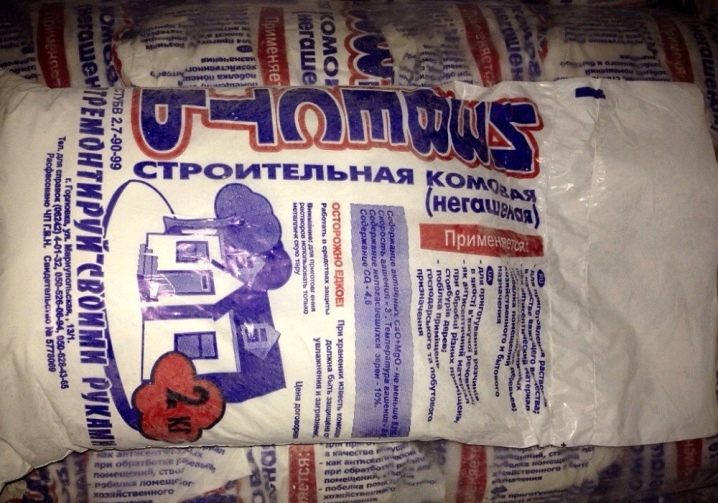
Remember: violation of storage rules is dangerous not only with the loss of consumer properties, the reaction of lime can lead to fire if electrical appliances and easily melting materials are located near the storage place. Do not forget that in case of fire it is unacceptable to use water for extinguishing.
Help with burns
A lime burn is a chemical damage to the skin, which is fraught with the most unpleasant consequences. Quicklime is an alkali that emulsifies and dissolves sebum, penetrating into the deep layers of the epidermis. Outwardly, the burn looks like a complex necrosis of tissues of an off-white hue with the formation of loose scabs. When in contact with the skin and mucous membranes, alkali penetrates in all directions, therefore the lesion focus is much larger than the zone of contact with lime. Damaged tissues partially lose their ability to regenerate and wounds heal for a very long time.

In case of defeat, medical assistance should be provided immediately. It is necessary to promptly call a doctor, and while she is going to try to improve the condition of the victim. If slaked lime gets on the skin, then rinse the affected areas with cold water for at least 15 minutes, and then treat with chamomile infusion or anti-inflammatory ointment.
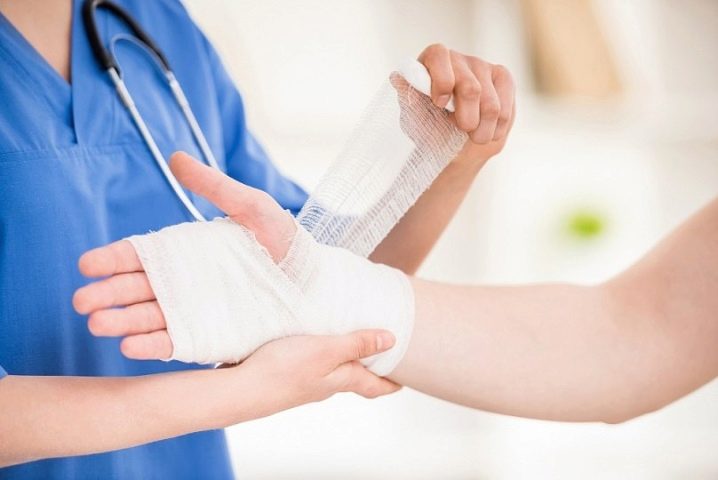
But if a quick burn occurs, then rinsing the skin with water is strictly prohibited, because this can aggravate the situation and cause irreparable damage to health. Most of the substance will come out with tears, and its remains must be removed with a cotton cloth and greased with oil or grease. Incidentally, this is the only type of chemical damage that can be used. For any other types of damage, such reagents are strictly prohibited. The wound should be covered with sterile tissue and then immediately taken to the hospital.
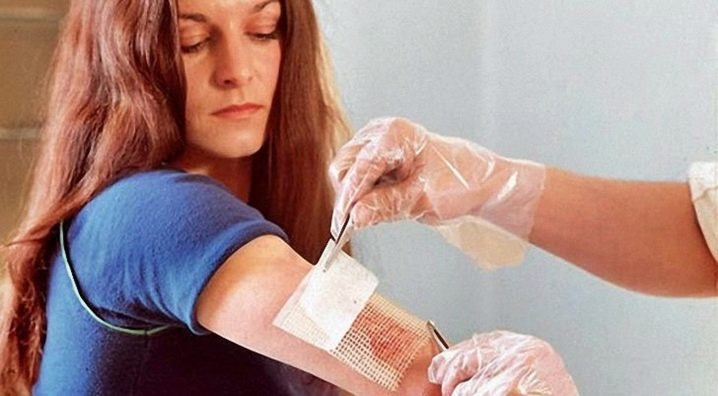
The situation is more complicated in the case of contact with lime in the eyes. It causes rather dangerous consequences, up to partial or complete loss of vision. Small and medium fractions are not so dangerous, they can only cause conjunctivitis. Large parts literally stick to the mucous membrane of the eye and actually corrode them, penetrating inside and causing sharp pain, burning and spasm of the eyelids.

First aid includes:
- instillation of disodium salt, which binds metal ions;
- use of pain relievers, including local ones.

For treatment, the eyelid is inverted, the lump of lime is removed mechanically, after which the patient is treated with antibiotics. The treatment period takes at least 2 weeks.
For information on how to extinguish lime with your own hands, see the next video.













Thanks for the detailed material, especially for the safety precautions!
The comment was sent successfully.